Roto Riteup: May 6, 2025
Pretty way to start the week:
Read the rest of this entry »
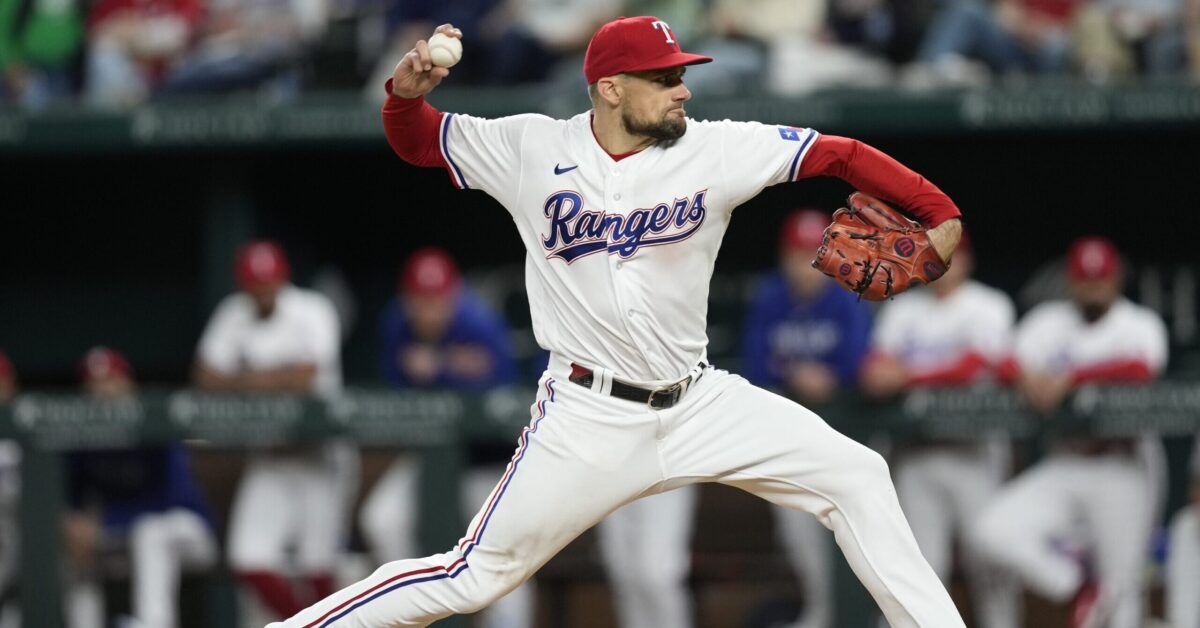
Daily SP Chart archive
The chart includes their performance for 2025 (I changed over from 2024 #s on April 15th), their opponent’s wOBA rank versus the pitcher’s handedness from this year so far (this changed as of April 14th), my general start/sit recommendation for 10-team, 12-team, and 15-team (or more) leagues, and then a note about them. Obviously, there are league sizes beyond those three so it’s essentially a shallow, medium, deep. If a pitcher only has an “x” in 15-team, it doesn’t mean there’s no potential use in 10s and 12s, but it’s basically a riskier stream for those spots.
These are general recommendations, and your league situation will carry more weight whether you are protecting ratios or chasing counting numbers. This is for standard 5×5 roto leagues. The thresholds for H2H starts are generally lower, especially in points leagues so I thought there would be more value focusing on roto.
Couch night! Crashed out watching games (OK, and the Met Gala entrances)… I’ll answer any questions about guys in the comments!
—

Daily SP Chart archive
The chart includes their performance for 2025 (I changed over from 2024 #s on April 15th — a little earlier than last yr), their opponent’s wOBA rank versus the pitcher’s handedness from this year so far (this changed as of April 14th which is still a pretty small sample, but we can start attacking some cold lineups or be more careful with those performing well so far), my general start/sit recommendation for 10-team, 12-team, and 15-team (or more) leagues, and then a note about them. Obviously, there are league sizes beyond those three so it’s essentially a shallow, medium, deep. If a pitcher only has an “x” in 15-team, it doesn’t mean there’s no potential use in 10s and 12s, but it’s basically a riskier stream for those spots.
These are general recommendations, and your league situation will carry more weight whether you are protecting ratios or chasing counting numbers. This is for standard 5×5 roto leagues. The thresholds for H2H starts are generally lower, especially in points leagues so I thought there would be more value focusing on roto.
—
| 7:31 |
: Welcome
|
| 7:31 |
: Here are the winning bids for the two 15-team Tout Wars leagues.
|
| 7:32 |
:

|
| 7:32 |
: Time to cut Ed Julien for a different dart in an AL Only obp league? Dezenzo, vivas, o Cabrera, J Noel, Romy G line the delicious wire…
|
| 7:32 |
: Probably just Dezenzo or Romy
|
| 7:32 |
: Do you see Javier Baez being a productive # 4/5 OF in a 14/15 team league? Do you see anything that suggests he has changed his swing and miss profile? Thanks
|
In the article, I cover the players using CBS’s (about 40% or less initial roster rate) and Yahoo’s ADD/DROP rates. Both hosting sites have the option for daily and weekly waiver wire adds. CBS uses a weekly change while Yahoo looks at the last 24 hours. Yahoo is a great snapshot of right now while CBS ensures hot targets from early in the week aren’t missed. The players are ordered for redraft leagues by my rest-of-season preference, grouped by starters, relievers, and hitters. Read the rest of this entry »
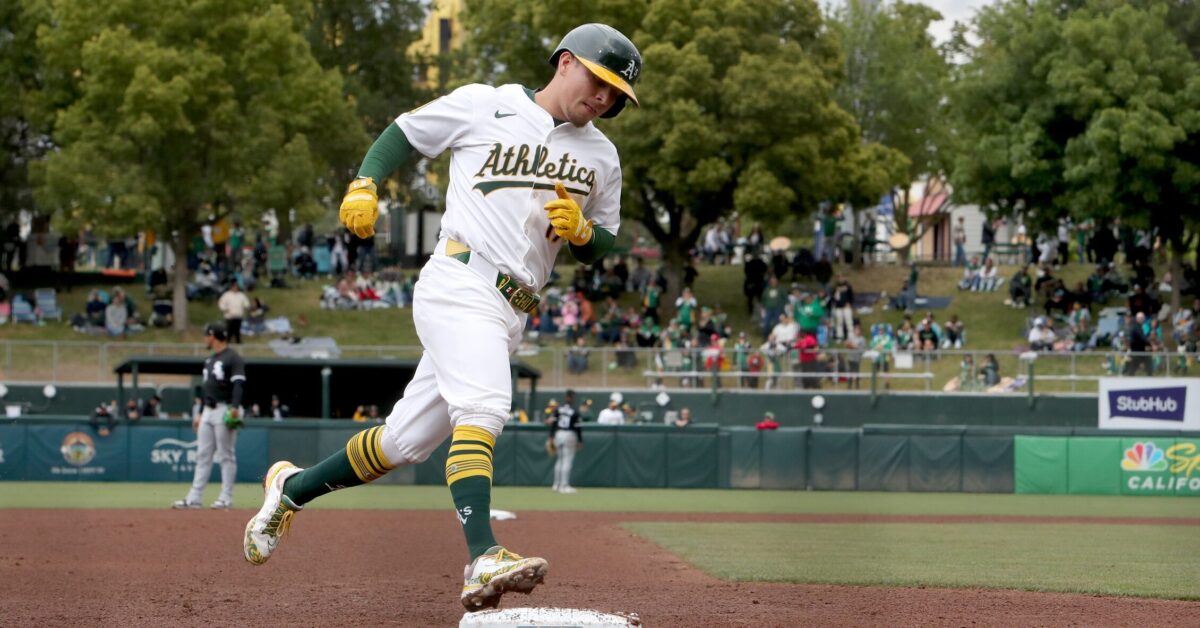
Angels
• Nolan Schanuel hit second for the last three games after batting sixth for most of the season.
• Kyren Paris is losing playing time (seven starts over the past 10 games) and his hitting just .033/.065/.067 for the past two weeks. Read the rest of this entry »
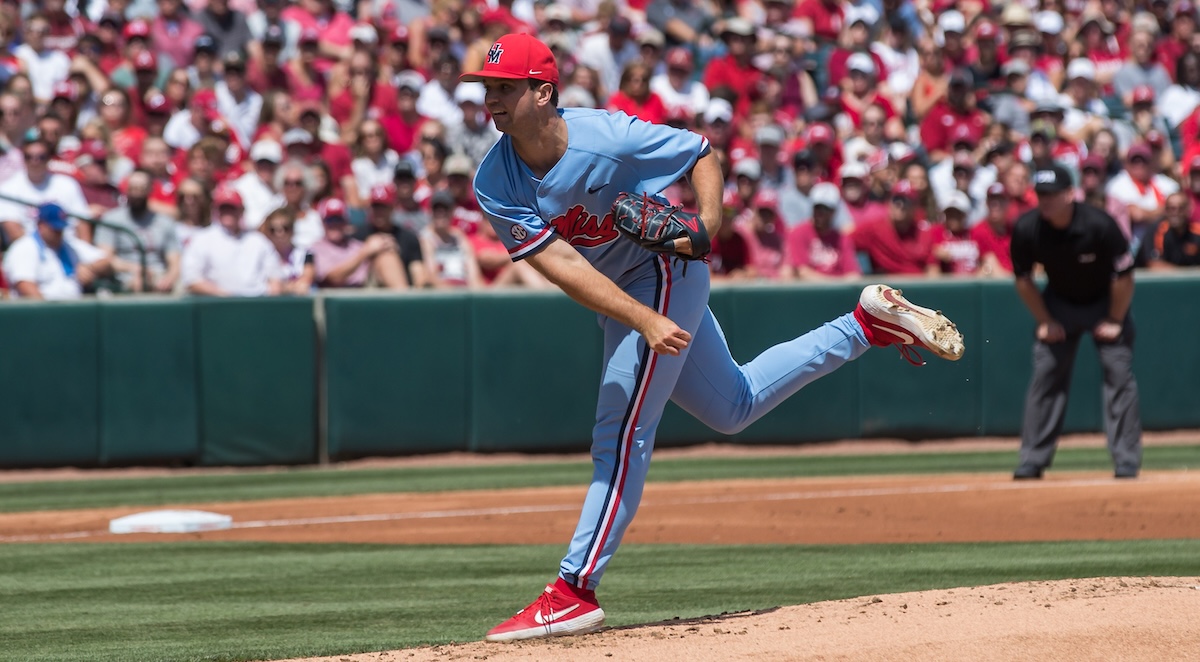
Here are the latest significant changes in projected playing time for pitchers since last Friday, led by Gunnar Hoglund (yes, that’s a photo of him in college way back in 2019!) making his MLB debut on Friday, hoping to help stabilize the back of an A’s rotation that’s struggled for production out of the fifth starter spot.
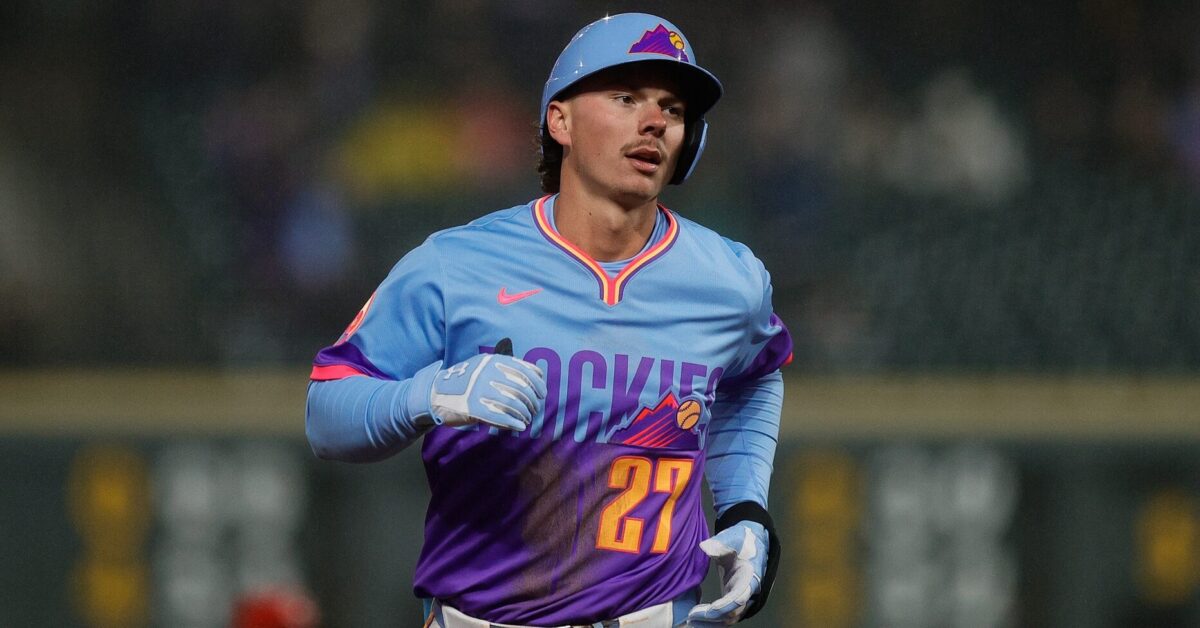
While the NFBC Main Event garners most of the attention, there are a handful of leagues with even larger entry fees ($2.5K to $15K). They are named “High Stakes Leagues,” and there are eleven of them. With so much money on the line, these fantasy managers try to gain any advantage. Most of the time, these managers will be a week or two ahead of everyone else on their adds. Here are the players and some information on the ones added in five or more leagues.
Jordan Beck (11): Beck had likely the best week of his career by hitting .389/.455/1.222 with 5 HR. He might only be aiming for short porch home runs. Here are his changes from last season.
| Season | Batt Speed (mph) | HardHit% | avgEV (mph) | Pull% | GB% | SwStr% |
|---|---|---|---|---|---|---|
| 2024 | 71.4 | 32% | 86 | 41% | 46% | 16% |
| 2025 | 73.6 | 53% | 93 | 71% | 35% | 18% |
Roster now and see if the changes stick.
Agustín Ramírez (9): In these two-catcher leagues, Ramirez will draw the attention of most managers. After hitting .254/.313/.479 with 3 HR and 5 SB in 80 AAA PA, he’s hitting .290/.333/.710 with 3 HR and 1 SB in the majors. So far, he’s not getting overmatched with a 6% BB% and 15% K%. He should be added in all leagues.
Tim Tawa (8): Several teams streamed Tawa. The reason isn’t obvious. On the season, he’s hitting .182/.292/.436 with 4 HR and 2 SB. It might be because the righty has four lefties on the schedule, but he’s struggled against lefties (.516 OPS) compared to righties (.794 OPS). Even his Steamer600 and core talent comps bring no inspiration.
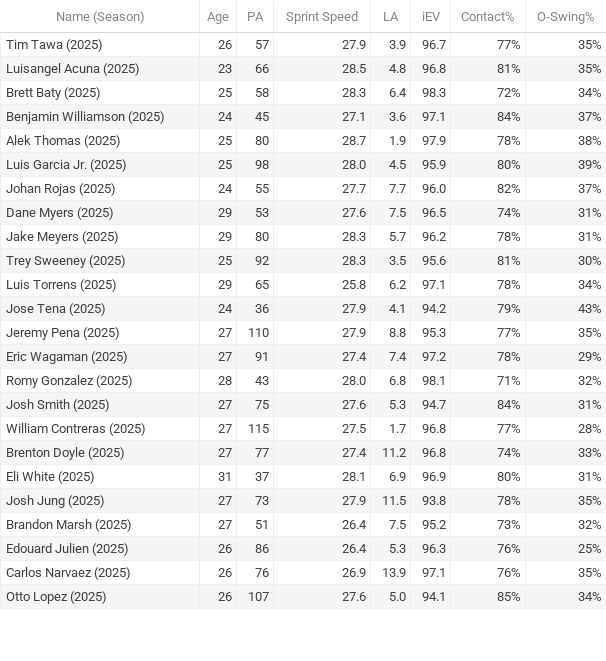

The only possible reason is for his .158 BABIP (.263 xAVG) to regress upward.
Jeff McNeil (8): Since returning from the IL, McNeil has started in four of six games, with two games coming in centerfield. In just 18 PA, he’s not been overmatched (6% K%) and has hit a home run. The biggest issue will be playing time.
McNeil isn’t going to make catches like those made by Tyrone Taylor.
Mets: Another night, another spectacular catch by Tyrone Taylor 👏 pic.twitter.com/002KnKc0Is
— Long Island Connection (@LIConnection) May 1, 2025
Great catch by Tyrone Taylor
— Adam Ronis (@AdamRonis) April 30, 2025
Taylor has been on fire, hitting .353/.389/.588 with 1 HR and 1 SB over the last week. At second base, Luisangel Acuña is hitting .314/.333/.371 with 2 SB over the last two weeks. There is no obvious spot for McNeil.
McNeil could at least be a decent fantasy bench option if he could find full-time plate appearances.
Nick Kurtz (7): The 22-year-old first baseman lit up the PCL, hitting .321/.385/.655 with 7 HR. He’s been a disaster in the majors with a .452 BABIP, the only stat propping up his .490 OPS. He’s lost at the plate with a 48% K% and 0% BB%. Pitchers aren’t throwing him many fastballs (28% seen). They are tearing him up with changeups (36% SwStr%)
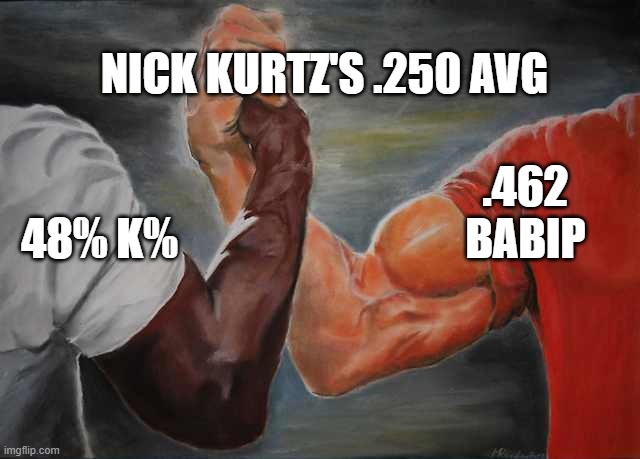
He is hitting the ball hard (92 mph avgEV, 39% HardHit%) to keep the BABIP high, but it’s on the ground (0% Barrel%, 54% GB%). While some of the other prospects seem to belong in the major, so far Kurtz doesn’t.
Luis Urías (7): Started 10 straight games while hitting .245/.345/.490 with 4 HR on the season. The reason for the turnaround is a career-low 14% K% and career-high 14% BB%. A fine middle-infield replacement.
Brooks Lee (6): I put a few bids in on Lee because every shortstop I add breaks down. Lee is a fine bench option in these deeper leagues. So far this season, he’s hitting .267/.353/.422 with 2 HR.
Drew Waters (6): With 13 straight starts and a .784 OPS (.405 BABIP), Waters is a decent fifth or bench outfielder. Nothing in his profile points to a breakout. He’s making less contact (65% in ’24, career 70%) and not hitting the ball as hard (29% HardHit% in ’24, career 33% HardHit%). Enjoy the hot streak and be ready to move on.
Nolan Gorman (5): Gorman has 10 starts over the last 11 games to “see what Gorman can do”.
“We’ve scheduled out what we want the lineup to look like from here through all of (the next series),” Marmol said. “They’ll all get time. But at the moment, I’d like to see what Gorman can do.”
“We have to keep our word there, right?” he added. “We said (Gorman would play), and even after the injury, that’s not runway. You have to allow him to go through some of the ups and downs. He’s going to get better. He’s working hard at it and we’re committed to seeing it through.”
Not much. Over that stretch, he’s hitting .147/.250/.235 with 0 HR and 0 SB.
Jon Berti (5): Batting ninth and has only started in seven of the last 10 games. He does have a .298 AVG and 7 SB. Also, he has 2 XBH, 1 RBI, and 0 HR.
Angel Martínez (5): While not walking (2% BB%), he’s performed better than expected (.333/.339/.439, 0 HR, 2 SB). He started in 11 of the last 12 games in centerfield. Bench streamer.
Eli White (5): The 31-year-old is breaking out by lowering his strikeout rate (20% K% in ’25, career 31% K%). With the drop in strikeouts, all his rate stats are up (.311/.367/.600) to go with 2 HR and 2 SB. On top of the strikeouts decline, he has career-highs in avgEV, maxEV, and Barrel%. The Braves seem to have bought into the changes by giving him seven straight outfield starts. Compared to Waters and Martinez, I’d take a chance on White since he’s showing improvement.
Ben Casparius (10): The adds came from news that the Dodgers considered stretching out Casparius as a starter. Over 21 IP (11 games), the 26-year-old posted a 2.91 ERA (3.15 xFIP), 0.92 WHIP, and 9.6 K/9. The big number for him is the 1.3 BB/9. It’s the lowest his walk rate has been at any other level or season. The low walk rate is backed up with a 33% Ball or the equivalent of a 2.3 BB/9. Strikeouts have never been an issue, as seen by his 10.7 K/9 in the minors and 10.5 K/9 in the majors.
I’d recommend rostering him for now and see how the transition goes. Again, keep an eye on the walk rate.
AJ Smith-Shawver (6): It seems like Smith-Shawver is always being added or dropped. The deal is that over the past three seasons, he has only thrown 48 major league innings with a 3.88 ERA (4.84 xFIP), 1.34 WHIP, and 8.5 K/9.
Walks (career 4.1 BB/9) will limit his upside. His career 1.34 WHIP does as much damage to a team’s ratios as a 4.57 ERA. He is not good with several parts of his game and needs some to go right to be a valuable fantasy contributor. Including staying healthy.
Emerson Hancock (7): It’s crazy that Hancock was being added. Over his career 90 IP, he has a 5.08 ERA (4.93 xFIP), 1.42 WHIP, and 6.0 K/9. The love came from his last three starts, where he has a 3.71 ERA (3.19 xFIP), 7.9 K/9, and 1.35 WHIP.
All the gains are on the strikeout front with a career high 7.6 K/9. The gain might be from his fastball velocity up 1 mph (sinker and four-seamer). I don’t think he’ll amount to much, but the options were thin in these leagues. Hell, I added Kyle Freeland in a couple of these leagues. What could go wrong?
Will Vest (10): Has three Saves and seems to be Detroit’s high-leverage reliever. Solid stats with a 2.77 ERA (3.17 xFIP), 1.00 WHIP, and 9.7 K/9. Fine add.
Shelby Miller (7): With Justin Martinez struggling with velocity, walks (5.4 BB/9), and an injury (shoulder), Miller looks like the next reliever to step in and close. Over 12 IP, Miller has a 0.00 ERA (3.13 xFIP), 0.63 WHIP, ad 10.7 K/9. Solid add.
Porter Hodge (5): With Ryan Pressley walking (7) more batters than he’s striking out (5), Hodge might be able to slide into the closer’s role.
| Name | Leagues Added | High Winning Bid | Low Winning Bid |
|---|---|---|---|
| Jordan Beck | 11 | 111 | 51 |
| Will Vest | 10 | 115 | 36 |
| Ben Casparius | 10 | 30 | 3 |
| Agustin Ramirez | 9 | 292 | 123 |
| Tim Tawa | 8 | 29 | 4 |
| Jeff McNeil | 8 | 28 | 2 |
| Nick Kurtz | 7 | 328 | 175 |
| Emerson Hancock | 7 | 41 | 1 |
| Luis Urias | 7 | 27 | 5 |
| Shelby Miller | 7 | 17 | 8 |
| Brooks Lee | 6 | 84 | 2 |
| AJ Smith-Shawver | 6 | 44 | 15 |
| Drew Waters | 6 | 9 | 3 |
| Porter Hodge | 5 | 77 | 26 |
| Nolan Gorman | 5 | 36 | 11 |
| Jon Berti | 5 | 22 | 1 |
| Angel Martinez | 5 | 14 | 4 |
| Eli White | 5 | 5 | 1 |
| Camilo Doval | 4 | 148 | 82 |
| Andy Pages | 4 | 64 | 6 |
| Eric Wagaman | 4 | 39 | 6 |
| Justin Slaten | 4 | 36 | 1 |
| Lucas Erceg | 4 | 33 | 7 |
| Ryan Gusto | 4 | 27 | 12 |
| J.P. Crawford | 4 | 26 | 11 |
| Trevor Williams | 4 | 25 | 4 |
| Fernando Cruz | 4 | 21 | 1 |
| Edouard Julien | 4 | 21 | 1 |
| Ben Williamson | 4 | 16 | 3 |
| Brooks Baldwin | 4 | 14 | 10 |
| Patrick Corbin | 4 | 7 | 2 |
| Jesse Winker | 4 | 5 | 1 |
| Chris Martin | 4 | 3 | 1 |